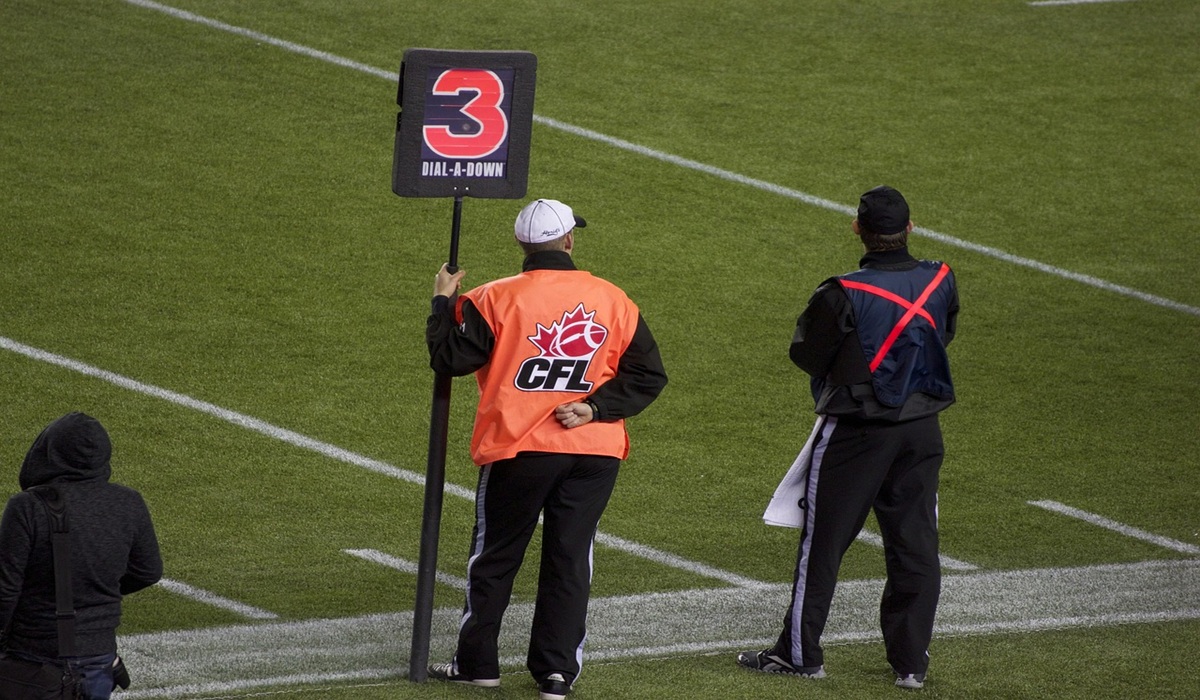The Canadian Football League is stepping into uncharted territory after announcing sweeping changes designed to increase scoring and modernize the game. In a move that stunned fans and players alike, the league will shorten the field from 110 yards to 100, reduce end zones from 20 yards to 15, and move the goalposts to the back of the end zone. Along with those adjustments, the familiar rouge rule will be altered so that missed field goals sailing through the end zone no longer automatically grant a single point unless a returner is tackled inside. A new 35-second play clock and benches moved to opposite sidelines round out a package meant to make games faster, higher scoring, and more appealing to a younger audience.
On paper, the CFL believes the changes could add roughly 60 more touchdowns per season and increase end-zone completions by about ten percent. For league officials, the reasoning is clear: more touchdowns equal more excitement, more drama, and potentially more fans tuning in. There are also arguments about safety and aesthetics, with goalposts at the back of the end zone creating cleaner sightlines and removing one of the game’s most visible hazards.
But not everyone is celebrating. Some of the loudest critics argue that the CFL is abandoning its own identity in an effort to chase the style of American football. The larger field, the 20-yard end zones, the quirkiness of rouges—these have been woven into the fabric of Canadian football for generations. Shortening the field and shrinking the end zones has already been dismissed by some players as “garbage,” with complaints that they were never consulted before such a defining change. Fans, too, are divided. Many see the modifications as a step toward NFL imitation, something they believe threatens the character and tradition of the Canadian game.
Even more contentious is the growing discussion around downs. Canadian football’s three-down system has always been one of its defining traits, forcing teams to be aggressive, throwing deep passes and keeping the game moving. Some have argued that if the league really wants to boost scoring, it should embrace a fourth down like in American football. It would almost certainly lead to longer drives, more touchdowns, and fewer punts. But that suggestion alone has already sparked outrage among purists who insist that three downs is non-negotiable. To them, giving teams a fourth opportunity would destroy the spirit of Canadian football, fundamentally erasing one of the qualities that makes the CFL unique.
What the changes will actually do remains to be seen. Shorter end zones could make red zone plays more claustrophobic and difficult, forcing quarterbacks into tighter windows and encouraging short-yardage rushing. Moving the goalposts back will reduce the dominance of kickers and shift the emphasis to touchdowns rather than field goals. The elimination of easy rouges means more strategy on special teams and fewer “cheap” points deciding games. Together, it amounts to a philosophical shift: touchdowns over tactics, sustained drives over technicalities.
Still, tradition runs deep in Canada’s oldest professional league. The CFL is banking on the idea that fans will embrace a livelier, more dynamic product. If the gamble pays off, the result may be more dramatic finishes, bigger offensive numbers, and new audiences drawn in by the promise of high-scoring football. But if the critics are right, the league could alienate its base in the process, trading in its heritage for a flashier but less distinct version of the sport. For now, the CFL is standing firm, determined to prove that these changes will breathe new life into a game many Canadians still consider their own.
Do you want me to expand this further into a longer, feature-style piece with player and coach reactions woven in, almost like a sports magazine article?









